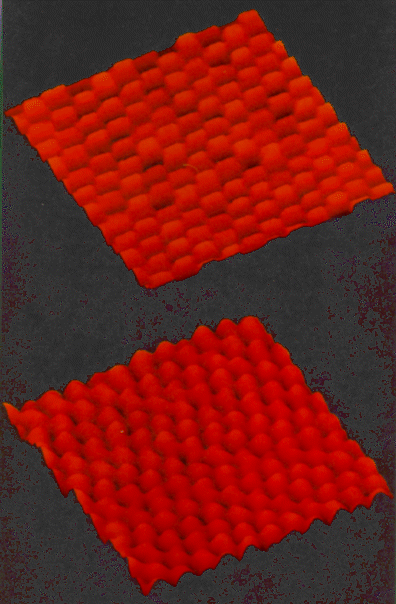
The instrument opens a window that will allow researchers to investigate friction, adhesion, wear, and the effect of different lubricants.
When two surfaces come in contact with each other, the atoms do not roll across one another like balls. Instead, they have chemical bonds and clouds of electrons (atomic orbitals) which determine the maximum drag. The properties of these orbitals and their relative orientations determine the strength of the frictional forces.
What factors increase or decrease these frictional forces? If we put oil or water molecules on the surface, how are the frictional forces altered? The bidirectional AFM will help us begin to understand such basic questions.
Much like a phonograph player, the bidirectional AFM maps a surface by scanning a very sharp tip across a sample, but with a force so slight that single atomic bonds are not broken during the scan. A conventional AFM measures surface topography as the tip moves up and down over individual atoms. To measure drag, the bidirectional AFM incorporates features which also allow a computer to record the sideways or rocking motion of the flexible, cantilevered tip.
The instrument allows scientists to study wear at an atomic scale, increasing the compressive force on the tip and measuring how much force is required to dislodge single atoms. Researchers also can measure whether frictional forces are uniform or if they vary based upon a pattern that is correlated to the atomic topography of the surface.
In biology, chemistry, and physics, practical questions are addressed and resolved based on research at the atomic scale. But in the study of the mechanical properties of surfaces, researchers have not yet made that leap. This instrument gives scientists the capability to explore the mechanisms underlying lubrication, adhesion, and the interaction between surfaces. Ultimately, what we learn should lead to better lubricants which extend the lives of moving parts and improve the energy efficiencies of mechanical devices.